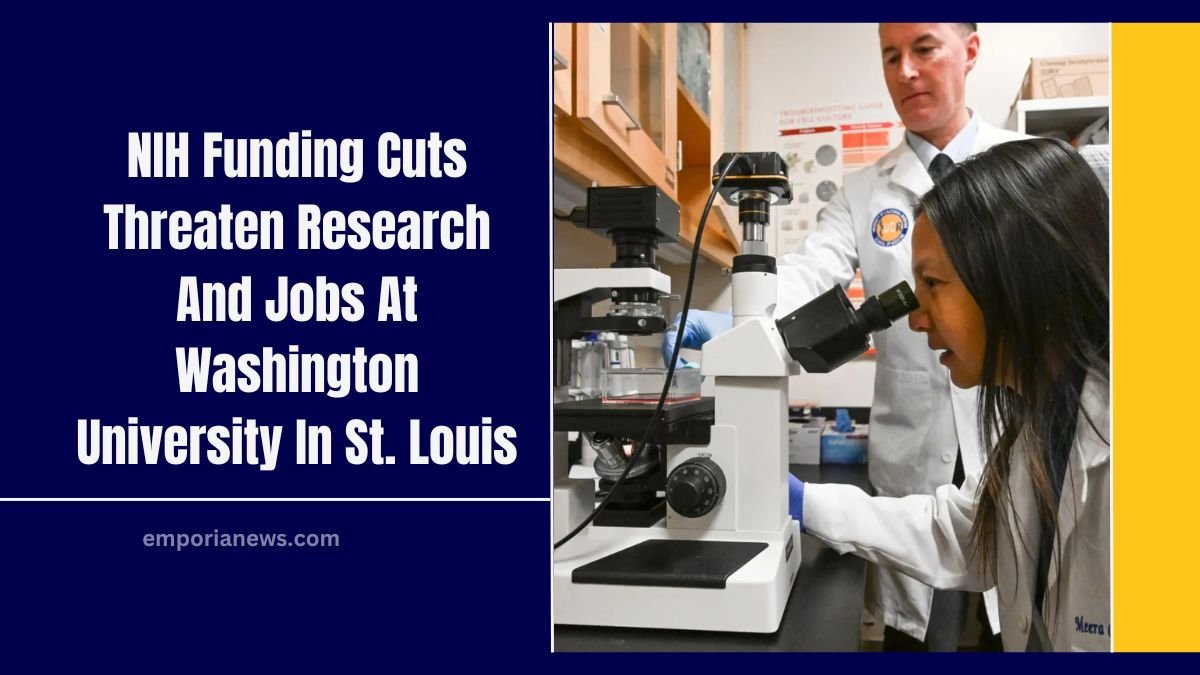The recent announcement by the National Institutes of Health (NIH) to implement a $4 billion reduction in research funding has sent shockwaves through the academic and scientific communities.
This decision, primarily targeting indirect cost reimbursements, poses significant challenges for institutions like Washington University in St. Louis (WashU), which stands to lose approximately $106 million in research funding.
Understanding Indirect Costs
Indirect costs, often referred to as overhead costs, encompass expenses essential for supporting research infrastructure but are not directly tied to specific projects.
These include utilities, maintenance, administrative support, and compliance with federal regulations. Traditionally, institutions negotiate their indirect cost rates with the federal government.
For instance, WashU has a negotiated rate of 55.5%, meaning for every $100,000 in direct research funding, the university receives an additional $55,500 to cover indirect costs.
Impact of the Proposed Cuts
The NIH’s proposal to cap indirect cost reimbursements at 15% represents a drastic reduction from previously negotiated rates.
Applying this cap retroactively to the 2024 fiscal year, WashU’s indirect cost recovery would have plummeted from approximately $173 million to $67 million, resulting in a $106 million shortfall.
Potential Consequences for WashU
The financial implications of this funding cut are profound:
- Research Infrastructure: Significant downgrades to facilities, equipment, and services that are vital for ongoing and future research projects.
- Employment: In 2024, NIH funding supported over 8,000 jobs in the St. Louis area. A reduction of $100 million could potentially eliminate around 1,100 of these positions, affecting not only researchers but also administrative and support staff.
- Scientific Progress: Delays or halts in critical research areas, including studies on cancer, Alzheimer’s, and other diseases, jeopardizing potential medical breakthroughs.
Voices from the WashU Community
The announcement has elicited strong reactions from the university’s faculty and administration:
- Chancellor Andrew Martin emphasized the severity of the situation, stating that the cuts “stand to have a significant impact on institutions like WashU.” He assured the community of proactive efforts to address the threat to research and its societal benefits.
- An anonymous professor expressed deep concern, noting that the cuts could lead to “major downgrades to research infrastructure like research facilities, equipment, and services across the institution.”
- Associate Professor of Molecular Microbiology, Sebla Kutluay, warned of broader implications, suggesting that such financial constraints might deter universities from expanding their science programs, ultimately impacting the nation’s scientific standing.
Broader Economic Impact
The repercussions extend beyond the university:
- Local Economy: Each NIH dollar is estimated to generate $2.70 in local income. Thus, a $100 million reduction could result in a $270 million economic downturn for the St. Louis area.
- Startups and Innovation: Local biotech firms, such as Fimbrion Therapeutics and Turing Medical, rely heavily on NIH grants. Funding uncertainties may lead to project delays, scaling back of initiatives, or even layoffs, stifling innovation and economic growth.
Legal Challenges and Current Status
In response to the announced cuts, legal actions have been initiated:
- Lawsuits: A coalition of 22 states filed a lawsuit challenging the legality of the NIH’s decision, arguing that the directive did not undergo proper congressional approval and could hinder scientific advancement.
- Temporary Restraining Order: A federal judge in Massachusetts issued a temporary restraining order, pausing the implementation of the cuts nationwide, pending further legal proceedings.
| Impact Area | Current Status (2024) | Projected Post-Cut Status |
|---|---|---|
| NIH Grants Received | $731 million | $731 million |
| Indirect Cost Recovery | $173 million | $67 million |
| Jobs Supported | 8,041 | ~6,900 |
| Economic Contribution | $1.97 billion | ~$1.7 billion |
Note: Projections are based on the application of a 15% cap on indirect cost reimbursements and its potential effects.
The proposed NIH funding cuts present a significant threat to institutions like Washington University in St. Louis, with potential ripple effects on research, employment, and the local economy.
As legal battles unfold and institutions brace for potential financial constraints, the situation underscores the critical importance of sustained investment in scientific research for the advancement of society.




